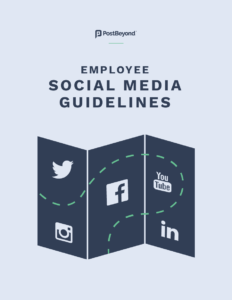The job of driving business growth is highly competitive. Building forward momentum is often a priority for most leaders while companies are eyeing for the top position in their industry.
Whether it’s through the use of more traditional ways or newer strategies, it’s a non-stop grind to win the customer’s mindshare. But there’s one lever for business growth that goes overlooked and undervalued; thought leadership.
Here’s the clearest definition of what thought leadership is, it is defined as “distributing interesting, news-worthy and innovative content that customers would not have likely discovered on their own. Thought leadership provides new ideas, perspectives, and data that teach and shift your audience from their status quo. This content often comes from a trusted source and can create a dedicated following or audience who are interested in action on new ideas.”
Savvy companies recognize the need for thought leadership content to be relevant across all of their customer interactions. Yet the gap between where companies are and what they need to accomplish is sizable.
What’s missing in a company’s ability to build thought leadership is the inclusion of its employees in helping build thought leadership.
Thought leadership is demonstrated most often when employees create, share and comment on educational content that is relevant to their position or the organization’s industry. According to the Content Marketing Institute, “brands that show true leadership in their content often employ experts from all levels of their organization rather than using a few talking heads again and again.”
While thought leadership strategies happen on and offline, the focus of this blog is why organizations need to encourage and enable their employees to engage in thought leadership on social media.
Why Social Media?
It is no longer a surprise that we are living our lives on social media. Whether it be for some YouTube entertainment or social networking on LinkedIn, we are social media users so it makes sense to build brand awareness where people are spending their time.
- According to an IDC survey, more than 91% of B2B buyers reported being active on social media.
- And of those, 75% of B2B buyers and 84% of C-level execs use social media during the purchasing decision process.
VTS, a leasing and asset management platform, leveraged social media and an employee advocacy solution to increase their potential reach to over 1.7 million people. This has also helped them generate $48,000 worth of earned media value in only 8 months.
Being active and managing your organizational and personal brand on social media is a necessity in order to stay competitive in today’s new online and social environment.
Why Go Beyond the Executive Leadership?
Most organizations understand the importance of having their top executives engage in thought leadership. An executive study found that CEOs who are active on social media are more likely to outperform their peers across in terms of overall performance. But what about the average employee? Thought leadership needs to be a key initiative for all frontline staff because they are the professionals who engage with customers, prospects and potential future employees on a daily basis.
Encouraging employees to be your organization’s brand advocate on social is essential as 42% of people distrust messages coming directly from brands.
Not only are your employees more trusted than the brand channels, having all different types of employees galvanize together creates a stronger more cohesive brand image. When a prospect searches out a company and sees social media content showcasing an organization full of smart and engaged employees they are much more likely to do business with them. Employees can also add a familiar face to large corporations that often look like cold and faceless.
Edelman’s research found one-third of buyers decided not to go forward with a B2B organization after viewing poor thought leadership content. This is why the thought leadership of your employees is so important as it will significantly impact the public perception of your brand. It’s really that straightforward.
How to Encourage Employee Thought Leadership
Thought leadership should never be a forced mandate as it will appear inauthentic and potentially hurt the brand more than none at all. Instead, it should be an opt-in program that is beneficial to the employee as well as the brand. To encourage thought leadership on social brands should showcase how thought leadership can assist them to build their network and showcase themselves as a leader in a competitive industry, which can lead to more opportunities and personal growth.
In order to help employees build solid and on brand thought leadership, fuel them with content, guide them with solid processes and simplify the process with technology. The best place to get started in to create Social Media Guidelines for Employees:





